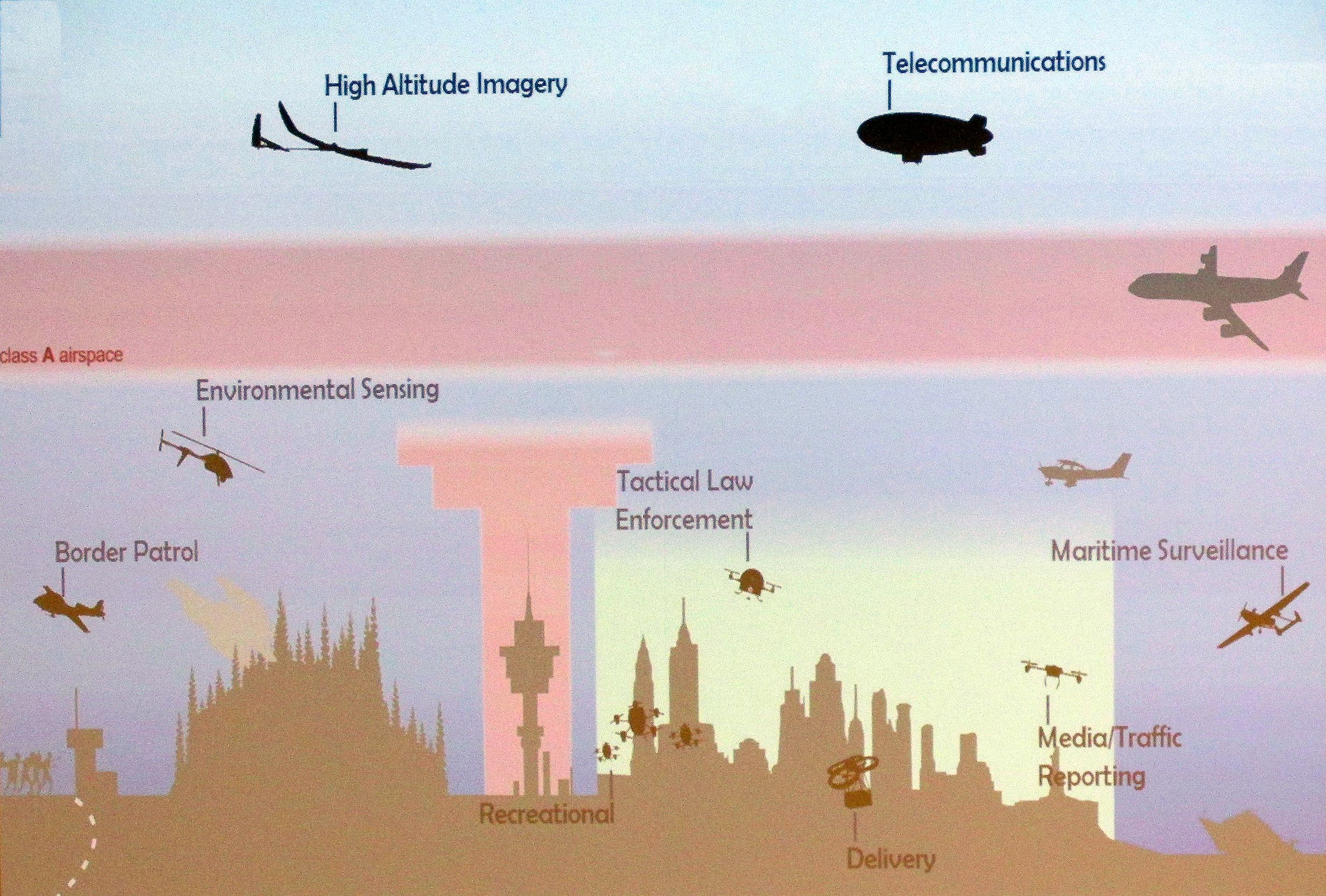The civilian use of drones has boomed in the last decade. But to realise their full potential these aerial newcomers have to be safely accommodated in civilian airspace.
Remote controlled aircraft have existed for almost as long as their manned counterparts. Advances in the development of sensors, lighter materials, computational capacity and telemetry have now made them accessible to anyone. There are more registered drone owners than plane and helicopter owners.
However, safety concerns hamper the development of these unmanned aerial vehicles, or UAVs, for civilian application. Currently safety relies on the capability of human pilots and regulations demand that UAVs are flown in daylight and always in the controller’s sight.
Though retail companies are pushing to implement aerial deliveries of their products using drones, the public, authorities and pilots manning full size aircraft still express doubts and resist UAV use. People are even training eagles to intercept drones and developing anti-drone guns.
Unpredictable situations
During five years of PhD research at the Faculty of Aerospace Engineering (LR), Yazdi Ibrahim Jenie studied the automated safety management of drones focussing on conflict detection and resolution (CD&R) to handle unpredictable situations. He looked at multi-layered fail-safe systems that exist for manned flight and defined a parallel framework for UAVs, with integration into civilian airspace in mind.
He found diverse CD&R methods under development in the research literature and used his framework to see how they might contribute to safe airspace integration. In this way he identified CD&R technology overlaps and areas where more research is needed. His framework can assist developers and authorities in the evaluation of future CD&R systems.
Cooperative protocol
Developing a couple of novel CD&R algorithms and protocols, he tested them carrying out extensive randomised simulations. His findings show that a cooperative protocol with right of way rules increases the number of UAV that can operate and justifies the need for order. He established the feasibility of safe integration of automated UAVs by simulating an exaggeratedly dense use of airspace and showing how rare near misses and collisions were within target safety levels. This can be applied to the skies above cities to calculate the number of automated drones that could be operated with no near misses or collisions per airspace layer.
Since simulation results are not enough, Jenie recommends more live testing and ultimately relaxing regulations to allow real UAV air traffic experiments. In this way the technology can be refined to bring the day of safe automated drone flight in our airspace closer.
Yazdi Ibrahim Jenie Thesis: ‘Autonomous Conflict Detection and Resolution for Unmanned Aerial Vehicles. On Integration into the Airspace System’ PhD supervisor: Dr. J.M. Hoekstra (Faculty of Aerospace Engineering) Defence date: January 23, 2017



Comments are closed.